Era 30: The Gorgathic Era
This era takes its name from the Gorgath, which although not the most common animal at this time, left behind some famous well-preserved fossils.
The great super-continent seemed to be holding together. Overall, this was another era of stability. There is the usual evidence of climate changes, earthquakes and large volcanic eruptions going on in the background, but nothing that caused too much disruption.
New Evolutions:
Planet Map:
The Air:
The
Waddling Aurora is the only new flying animal that is known to have evolved at this time. This was a less elegant version of the
Cackling Aurora, and mostly fed on plants instead of small animals. It seems to have been very common in the great lakes south of the Oltic sea. Most other Aurora species were still doing very well.
The various Jubbler and Scourge species continued to make life harder for all kinds of other lifeforms. The
Royalis Jubblera Gardinice continued to thrive especially well, with help from the new plant the
Great Woody Fanel (more on that below).
Florytes, which had evolved in the last era, continued to increased in number. From the many fossils they left behind during this era, it seems they were well established over large areas of the continent, only really absent from deserts and glacier areas. Some of their older cousins like the
Flevryte and
Kuaryte seemed to be on the way out.
The Land:
Firstly, to the new plants which evolved at this time - The
Spiteful Fuzz evolved stinging leaves which must have made it unpleasant to eat. The Spiteful Fuzz could also survive in drier ground than before. Despite still being primitive compared to other plants, it soon became a lot more widespread than the earlier
Ground Fuzz.
A new kind of land Zeeboo appeared, the
Slime Zeeboo. As the name suggests, it had the ability to produce slime which was useful for protecting against the acid spit of Jubbler species, and made it less appetising in general. This was one Zeeboo that spread further into forests and jungles, as opposed to keeping to remote areas.
The ancient
Woody Fanel, which had been gaining numbers in the last era, evolved into a new larger form, the
Giant Woody Fanel, with hollow spaces in its trunk providing ideal homes for nesting Jubblers. It also produced more fruit than before. It seems this species evolved in special partnership with the Jubblers, especially the Gardinice variety, which worked out very well, as they became one of the most common trees at this time, competing with the hardy
Liandranels. The Jubblers would provide defence for the plant in return for shelter and nourishment - just as the smaller
Nest Fanel had evolved in the Snoscapian Era, with hollow bulbs growing underground to cater for the burrowing
Terrarytes and related species.
As for land animals, there was a lot of competition among predators. The struggle between the Kakleia and Lupivus branches of evolution became more serious with the appearance of the
Striped Lupivus and
Shadow Kakliea. Both were becoming very similar to each other. The Striped Lupivus had better eyesight, gave birth to better-developed young, was a more attentive parent, could go for longer without water, was stealthier and much stronger than its rival. Indeed it was strong enough to wrestle with the largest prey, and haul its kills for long distances or up into the trees if needed. However, it was also the most sophisticated animal the planet had ever seen, and as such generally needed more food and took longer to grow to maturity.
The Shadow Kakliea was a simpler and much weaker animal in comparison, but still well armed, and fully capable of killing smaller animals without difficulty. It had a more forgiving stomach and could afford to experiment with its diet. It was also a slightly better climber than its rival, helped by having actual claws on the end of its toes. Perhaps most importantly, the Shadow Kakleia had a noticably larger brain than its ancestors, making it even cleverer than the Striped Lupivus. In fact was probably the smartest animal on the planet at this time. This new brain was most likely used to help plan ambushes and size up potential prey, as well as allow for more complicated social play. Its brain was roughly equal to the ancient
Quadarms, which some believe had learnt basic tool use with their grasping arms, before narrowly avoiding survival during the Mass Extinction Event #3. Anyway, its clear the Kakleias remained more common than Lupivus's in the forests and jungles of this era, but not by too much of a margin.
Older hunters were declining in number. The appearance of the Shadow Kakliea seems to have been especially bad news for the
Valios Polykalios and original
Kakleia, all of which shared the same general lifestyle, hunting in and around the trees. The
Banded Lupivus was also in decline, but other Lupivus's like the
Dire Lupivus and
Lupivus Secus were still doing well as hunters in the open plains.
Back in the forests and jungles, the
Zunatra gave rise to another two species, and still survived to the end of this era. Firstly, the
Zunatrix had the advantage of an improved sense of smell, while still not particularly sharp, it was nonetheless the best of any living land animal. Its stronger jaws and sharper fangs allowed it to take on a wider variety of prey. Like its ancestor, it was not really very good at climbing, but the lack of specialisation allowed it to life just as well in scrubland or open plains. It couldn't match the top predators in a fight, and was stuck firmly in the middle of the food chain, but seemed to have done quite well in different kinds of habitat.
Secondly, the
Gorgath was a hunter that completely abandoned life in the trees, and became much more strongly built, as well as more sociable. But out in the plains it was outmatched by the likes of the Lupivus Secus in almost every respect. In many ways it almost matched the Secus, but had no real advantages other than its simplicity, lower food requirement, and its instinct for digging holes in the ground in search of small animals to eat, where its strength was especially useful. It probably lived a fairly dangerous life on the borders of Secus territories, scavenging where it could, or seeking out prey in poorer, sparsely-populated regions that the Secus didn't bother with.
For herbivores, there still wasn't much competition, allowing the populations of some species to reach record levels. Great herds of
Seer Stalkers appeared at this time. Stronger legs allowed faster running, and although not as fast as the
Seer Leggers, they were still able to outrun many predators, that is if they did not stand and fight together using their spikes for defence. And they also gained better eyesight, making it harder for predators to sneak up on them in the first place. Their digestive organs became even larger and more complex - in fact, the Seer Stalkers were the most efficient plant eating machines ever to walk on land at this point. While this may have slowed them down, it was a definite advantage. Meanwhile they lost their former resistance to the cold, and while they could still survive in most of the continent, it may have been one reason why their older cousins the
Horned Stalkers still survived in good numbers.
While the Stalkers were doing well, often feeding on tougher vegetation that others missed, the faster and simpler
Seer Leggers also continued to thrive. It was inevitable that their massive population would give rise to new species, and so the
Proto-saur emerged. This was a hardier animal all round, with tougher eggs, claws, and for the first time an instinct to guard and protect its young. But, if confronted by something like a Lupivus, its only real option was still to run away. Even when working as a team - as, like its ancestors, it was more social than the Stalkers - its tougher skin was still fully vulnerable to the strong limbs and crushing jaws which many predators had evolved by this time. Its claws were still weak as a weapon, except when used by rivals fighting each other for status in the group. Fortunately, fast running and good eyesight still served them well. The populations of Seer Leggers and Proto-saurs continued to outnumber most other land animals.
The
Velocirix and its long-lost cousin the
Bariothorim Roamers still had very healthy populations. The Velocirix still had the highest population overall. Giving birth to live young was one advantage they had over the Stalkers and Leggers. They also had a more well-rounded set of senses which helped in many situations.
The
Greater Porcuball had never done very well. But its line continued with the
Great SpikeBall. Its spines were dangerous enough to be a real deterrent, along with the sheer size of the animal. Large herds of them wandered the plains and forest floors. Though hardly as numerous as the Stalkers or Leggers, they were still much more successful than their ancestors. Their smaller relatives the
Porcuballs and
Fluffballs were now largely confined to the cold snowy plains of the north.
There was a decline of many burrowing animals at this time, particularly the
Later Cavebug, and the duo of the
RaspuWrum and
Mimicalix. This has been blamed on the appearance of the
Mortyte, a fierce hunter with claws able to pierce bone and the deadliest poison the planet had seen so far. If the earlier
Terrarytes and
Carnytes had been a health hazard, the Moryte was a deadly threat. It probably still spent most of its time underground, living in social groups, but despite this, some fossil specimens have been found which are surprisingly large in size. Although it was a fairly slow crawler, with its leaping ability it could have easily attacked large animals on the surface too. It is not believed to have hunted as a coordinated pack, but rather as a disorganised mob, eating its way through the undergrowth and underground tunnels alike. It is likely they made homes in the hollow underground bulbs of Nest Fanels, and attacked the Great Woody Fanels to get at nests of Jubbler Gardinices, where great battles would have ensued. Their need for prey probably kept them on the move most of the time, and so their less violent cousin species were still able to survive.
Perhaps because of all this upset, the
Pappy Bulgorb abandoned life underground and evolved a stronger body - complete with a kind of skeleton - to suit life on the surface. Some believe the Pappy Bulgorbs protected other Bulgorb species, but this is unproven. Without much in the way of senses, it is not clear exactly how well they could cooperate. In any case their sticky tongues grew longer and more flexible, which would have been ideal tools to steal insects from the webs of
Predatory Inis and
Arboreaneraria if they could be found. Their tongues may also have made effective snares for small land animals passing by. The strong jaws the Bulgorbs were certainly dangerous to just about any animal.
Despite evolving from relative newcomers on land, the
Greater Landtupler ranged further and further inland, and was actually able to survive drier conditions than many other land animals. It seems the
Toxidid was now its main rival. While the Toxidid had resistance to poisonous plants, and was able to dig deeper underground - to get at Zeeboo roots amongst other things - the Greater Landtupler was brainier, sociable and had a more omnivorous diet. Both were able to coexist for now. The original
Landuplers still survived in wetter regions, and the
Mudtuplers thrived in many swampy or coastal areas of the continent.
Finally, the
Megalithavalion was one of the few large animals on land at this time, or more accurately in rivers and lakes, where it hunted by ambush. This was the big cousin of the
Predarivervalion, with possibly the largest and strongest jaw of any animal up to this point. It may also have been the loudest animal, as it had special nasal passages that seem to have evolved as resonating chambers.
Notable Plants:
Xeeboos, Mountain Zeeboos, Tougher Zeeboos, Liandranels, Novo Tranel, Great Woody Fanels, Nest Fanel, Sprouty Fern, Winter Fern, Spiteful Fuzz, Burrowing Zeeboo, Tougher Zeeboo, Slime Zeeboo, Chungus, Super Lichen, Fire Moss, Buggy Moss, Parasitic Driftseed.
Notable Animals:
Bariothorim Roamers, Velocirixes, Seer Leggers, Horned Stalkers, Great Spikeballs, Striped Lupivus, Dire Lupivus, Lupivus Secus, Shadow Kakleia, Tuughwurms, Caveworms, Arboreanerarias, Merlytes, Mortytes, Toxidids, Subterradid, Florytes, Megalithavalions, Predarivervalions, Royalis Jubblera Gardinices, Scourges, Blood Scourges, Jubblera Sensicas, Aurorlys, Cackling Auroras, Waddling Auroras, Armored Amphibeels, Mudtuplers, Greater Landtuplers.
The Oceans:
There wasn't too much change here -
Lordavalions and
Huntudians remained the top predators,
Roxorfish the top prey, with lots of speedy
Velocine Finners swimming circles round most other creatures. However, the parasitical
Riftocult continued to spread, especially in warm tropical waters, taking a toll on populations. Although animals were rarely killed outright by the Riftocult, they were weakened and often fell victim to predators, which would often get infected in turn.
New reefs based on
Skimarets became well established, along with large sea forests of
Algaceae Ascendis, providing lots of habitat for all kinds of creatures in coastal waters. The
Tentazomp was the most successful hunter of hatchlings and small animals living in these places. Like its ancestors, it could use its tentacles to reach into tight spaces and grab prey. But it was a more specialised carnivore, with stronger tentacles for wrestling with its victims, and was also a better swimmer, all of which aided hunting.
The
Thulu Finner appeared at this time, an offshoot from the strange
Arrow Finner, and in some ways was even stranger. Its 'tentacles' are believed to have been used to make primitive nests on the sea floor, hidden amongst reefs or sea plants. They may also have been used to carry around bits of food to share with others. As well as being brainy, they Thulu Finners now had a simple social system, and would have helped each other to protect eggs and hatchlings. Despite their odd shape, they were still strong swimmers, with sharp eyesight and quick reactions to help evade predators.
It seems that the ancient
Radarex had been slowly evolving into a new form over the ages. The
Phantomorex became recognisable as a new species during this era. It is believed to have taken its skin camouflage even further, being able to take on more complex patterns of colour to blend into different backgrounds and ambush its prey. Its electrical sense remained unmatched, and still provided it with a unique mode of hunting in either darkness or daylight. These creatures also began to venture into the dark depths, perhaps to breed in relative safety.
Another new creature in the deep ocean was the
Bathysfish, differing from the
Diverfish by having a more omnivorous diet, and more efficient gills. It is believed the Bathyfish carved out nests from the
Yellow Bathysplates and other 'plants' of the deep, whereas the Diverfish nested right next to hot water vents. The
Bathysfish may not have made good neighbours as they probably ate all kinds of hatchlings, including their own. In any case the two species were able to coexist, with large populations scattered across the deep.
Back in shallower waters, the
Submaryte appeared, evolving from the ancient
Merlytes. The Submarytes took the unusual step of losing their lungs, while gaining functional gills instead. These creatures now spent almost all their lives underwater, and gathered in communal groups on the sea floor, ploughing their way through vegetation and any animal corpses they came across, similar to the long-extinct Quadruplers of ancient times. They also rubbed shoulders with their primordial cousins, the
Pondurytes.
Finally, one other new evolution emerged from the swarms of
Shellster Reinizios which drifted through the plankton-poor waters of the open ocean, where there was not enough plankton for other filter feeders to survive in any numbers. This was the mysterious
Iyirein, which only differed from the Reinizio by having a much larger and more complex 'brain'. It is not known why this sudden change occurred, or exactly what it was used for. Like their ancestors, the Iyirein had limited movement and senses, with only the sense of smell developed to any degree. However, they were quite sociable creatures. Some speculate the big brain had something to do with complex social rituals. Whatever the case, their population was only ever a fraction of the simpler Reinizios during this era.
Notable Animals:
Shellster Reinizios, Iyirein, Shellster Grapplus, Tentazomps, Phantomorexes, Bathysfish, Roxorfish, Cloudfish, Pondurytes, Submarytes, Velocine Finners, Thulu Finners, Huntudians, Lordavalions, Amacilndasa Interlopus, Slimey Slugs, Mibblers, Driftworms, Seatuplers, Mudtuplers, Shy Hunters, Yuckius Sirenis, Crimson Slasheels, Armored Amphibeels, Voidus Garbageos, Nitros Intrepidus, Surf Auroras, Cackling Auroras.
Notable Plants:
Skimarets, Aguaminarets, Spongita Terranovas, Bathyscapers, Mini Bathystowers, Yellow Bathysplates, Cryo Bubbleos, Algaceae Ascendis, Algaceae Dendrotrunkis, Algaceae Dendrocovitis, Sea Fuzz, Sea Urchins.
Bonuses:
Plant award: Giant Woody Fanel.
TerrisH has +1 gene bonus.
Animal award: Mortyte.
Lord_Iggy has +1 gene bonus.
Innovation award: none awarded this time!.
Story award: Nailix has +1 gene bonus.
Branching awards: erez87,
Bestshot9 and
Kol.7 each have +1 gene bonus this time.
Problems:
BTW, I still need a name for the big continent - any suggestions?
@erez87, as you may notice, I changed three of the four genes you wanted to add, to fit with very similar (IE basically differently named) genes that had already been used. As you know, I want to avoid having countless different definitions for the same thing in the stats...
@Kol.7, the 'stalking' you proposed was lumped in with 'stealth', hope that's OK.
@All, again, I have removed biased words like 'magnificent' from species descriptions. I've toned down descriptions that boast of how
well things are doing - how can you say ahead of time? What if I decide otherwise?

Ideally, the descriptions should be fairly 'neutral', so we don't get conflicts between what actually happens in the updates, and what's in with the stats list. When I personally look at the descriptions, its only for pointers about general lifestyle etc.
@me, I spotted and fixed some mistakes with total gene count (the number in brackets) for some species. Some things like the recent Legger species were lower than they should have been.
Also, I
had been trying to update DaftNes2 before updating this again. Now I think its better to make this more of a priority, even if it delays my other NES by a day or so, since that NES is always going to take a lot more time anyway. So, I could say that the next update will not take so long, but I doubt you'll believe me. Wait and see

IMPORTANT NOTE: you only have permission to complain about delays if you posted a flawless evolution post that did not require me to do any searching, editing, rewording of the description, fixing of many spelling mistakes etc

Also also, does anyone actually read these updates? Would it be better just to see the bonuses and the stats list updated?
Species Stats: (FYI: currently 176 species listed, including recent extinctions)
 ! Good if it's an NPC! I could continue from it and not worry about the arrow anymore.
! Good if it's an NPC! I could continue from it and not worry about the arrow anymore. ! Good if it's an NPC! I could continue from it and not worry about the arrow anymore.
! Good if it's an NPC! I could continue from it and not worry about the arrow anymore.
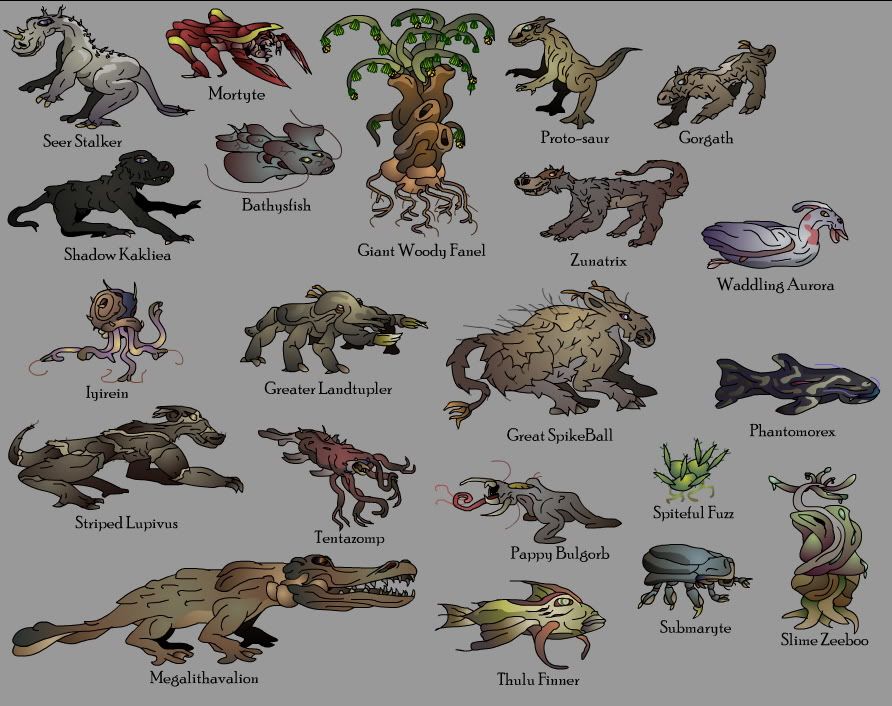
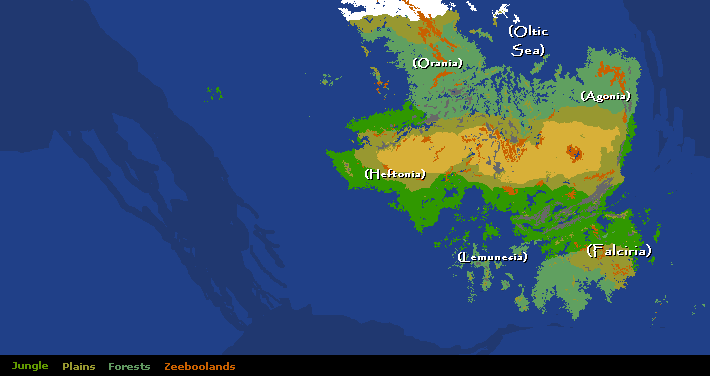

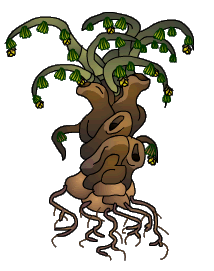

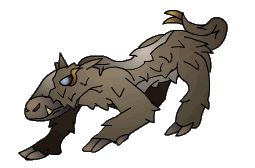
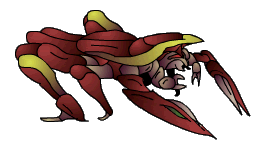
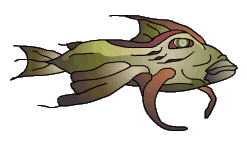

 Ideally, the descriptions should be fairly 'neutral', so we don't get conflicts between what actually happens in the updates, and what's in with the stats list. When I personally look at the descriptions, its only for pointers about general lifestyle etc.
Ideally, the descriptions should be fairly 'neutral', so we don't get conflicts between what actually happens in the updates, and what's in with the stats list. When I personally look at the descriptions, its only for pointers about general lifestyle etc. 

 - !BTW, congrats everyone on this getting to 30 updates! -
- !BTW, congrats everyone on this getting to 30 updates! - 
 for the effort you have placed in this for us!
for the effort you have placed in this for us! j/k man great update! Keep it alive!
j/k man great update! Keep it alive!

